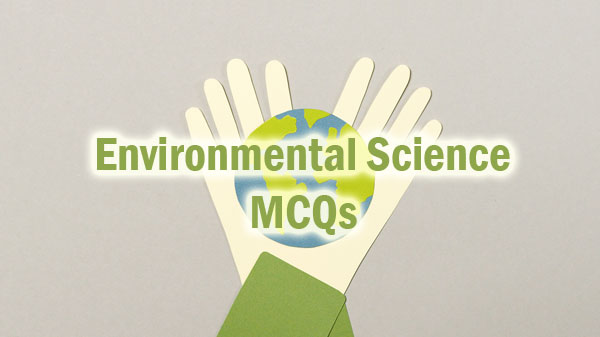Environmental Studies Questions and Answers
Download all Environmental Studies Questions and Answers Papers here. We are providing Environment Science Questions and Answers Papers. We have given the solutions for EVS solved Questions and Answers Papers to make your preparation efficient.

Click here to Download the Environment Science Questions and Answers Papers from the attached pdfs. EVS Questions and Answers Papers attached in the PDF Format so the aspirants can download quickly. Along with these Environmental Studies Questions and Answers papers, we have attached Environment Science Syllabus and Exam Pattern. Environmental Studies Questions and Answers Papers are available.
Applicants can download EVS Questions and Answers Papers. Also, get the Study material, Preparation tips in addition to the EVS Questions and Answers Papers for posts. On our page, we provide Environmental Studies Questions and Answers Papers for the sake of aspirants.
Questions and Answers on Environmental Studies
1. Environmental Impact Assessment for various developmental project is carried out by a team of experts. Each expert member associated for EIA requires accrediation from :
(A) NEERI
(B) NABET/QCI
(C) CPCB
(D) SPCB
2. The secondary and tertiary impacts of developmental action can be addressed by :
(A) Simple matrix
(B) Stepped or cross impact matrix
(C) Checklists
(D) Overlay maps
3. Problem of soil salinity along coastal belts is often mitigated by treating the land with :
(A) Urea
(B) Organic compost
(C) Superphosphate
(D) Calcium sulphate
4. Interpretation of the anticipated impacts of any developmental project does not consider :
(A) Individual species
(B) Characteristics of habitat
(C) Characteristics of ecosystem
(D) Monetary cost of project
5. Natural decomposition of solid waste is a :
(A) Biodegradable process
(B) Pyrolysis
(C) Carbonization
(D) Corrosion
6. Which of the following is not a characteristic of hazardous waste ?
(A) Toxicity
(B) Corrosivity
(C) Ignitability
(D) Porosity
7. The emissions of air pollutants from automobiles were initially regulated under :
(A) The Air (Protection and Control of Pollution) Act, 1981
(B) The Environment (Protection) Act, 1986
(C) The Water (Protection and Control of Pollution) Act, 1974
(D) Forest (Conservation) Act, 1980
8. Which of the following is first Act passed by Indian Government in confirmation to the United Nation’s Conference ?
(A) The Water (Prevention and Control of Pollution) Act, 1974
(B) The Environment (Protection) Act, 1986
(C) The Air (Prevention and Control of Pollution) Act, 1981
(D) The Indian Forest Act, 1927
9. All the members of a State Pollution Control Board except the member secretary can hold the office for a term of :
(A) Six years
(B) Three years
(C) Four years
(D) Five years
10. In which year the Forest (Conservation) Act was passed ?
(A) 1974
(B) 1981
(C) 1980
(D) 1986
11. In order to cover the areas not covered by other laws regarding environmental pollution in the wake of Bhopal Tragedy, the notable legislation passed in India is :
(A) The Wildlife (Protection) Act, 1972
(B) The Environmental (Protection) Act, 1986
(C) The Water (Prevention and Control of Pollution) Act, 1974
(D) The Air (Prevention and Control of Pollution) Act, 1981
12. A population grows exponentially with the growth rate of 2% per year. After how many years it will double ?
(A) ~25 years
(B) ~70 years
(C) ~35 years
(D) ~30 years
13. A Log-Normal distribution has a mean of 5 and standard deviation of 2. Its ~67% of the area under the curve is between the values of the variable lying between :
(A) 3 and 7
(B) 2.5 and 10
(C) 1.25 and 20
(D) 1 and 9
14. In a multiple regression analysis, the explained variance per degree of freedom is found to be 100 and the unexplained variance per degree of freedom is 20. The value of F-statistic will be :
(A) 5
(B) 0.2
(C) 80
(D) 120
15. The most abundant hydrocarbon in natural gas is :
(A) Methane
(B) Ethane
(C) Propane
(D) Butane
16. ‘Ozone hole’ over Antarctica is seen during :
(A) September—November
(B) July—August
(C) May—June
(D) December—January
17. Carbon intensity of a country is a measure of :
(A) Carbon dioxide emissions per unit GDP
(B) Carbon dioxide emissions per unit electrical energy produced
(C) Carbon dioxide emissions per unit area per year
(D) Carbon dioxide emissions produced per person
18. Global warming potential (relative to CO2) of N2O over a time horizon of 20 years is :
(A) 100
(B) 280
(C) 170
(D) 25
19. Grazing cattle suffer mottling of teeth due to emission of ……………….. from a factory in the neighbourhood.
(A) Chlorides
(B) Fluorides
(C) Ammonia
(D) Benzene
20. One of the following waste is not classified as hazardous waste :
(A) Electronic waste
(B) Chemical waste
(C) Biomedical waste
(D) Kitchen waste
21. Ozone concentration is measured in Dobson unit. One Dobson unit represents a layer of ozone around the earth which at standard atmospheric pressure ?
(A) 1 mm thick
(B) .1 mm thick
(C) .3 mm thick
(D) 0.01 mm thick
22. Soil salinity is caused mainly due to excess concentration of …………….. in black cotton soil.
(A) Sodium
(B) Calcium
(C) Magnesium
(D) Potassium

